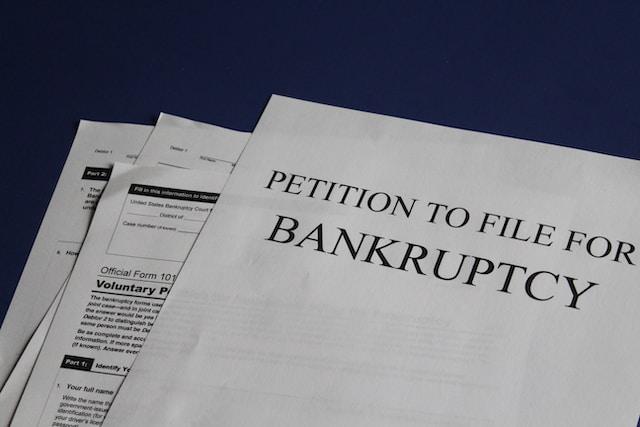How to File Bankruptcy in California
Our product recommendations are made independently, but we may earn affiliate commissions if you use a link on this page.
Financial challenges are a natural part of life, keeping every person on their toes as time inevitably presses on. However, some troubles are more critical than others. If you are in financial distress from a job loss or something similar, bankruptcy might be a helpful addition to your life.
Bankruptcy in California is confusing, but it isn't much different than filing for financial status in other states. It pulls apart contracts between you and creditors, allowing you to get back on your feet and regain control over your life.
If you’re interested in filing for bankruptcy in California, read on. Know this process so you can get help sooner rather than later.

How Does Bankruptcy Operate In California?
Bankruptcy in California is almost identical to the process in any other state. Bankruptcy is handled by the federal government, so you don’t have to worry as much about any state laws in California during the filing process.
However, it is critical to note that California’s laws come into play and will impact you slightly. These laws decide what is considered property and which forms of property you are allowed to keep during the bankruptcy process.
There is also specific filing information necessary in California that you won’t necessarily find in other states. There are slight variations but no drastic differences for bankruptcy in this area.
Steps for Filing Bankruptcy in California
The most common action is hiring an attorney for bankruptcy filing. They will help you get legal offerings in order and complete the process to ensure everything is done correctly, and they’ll also represent you. Attorneys know much more about the law than the average California citizen.
However, it might be cheaper and quicker to file for bankruptcy in California without hiring a professional to work for you. If that sounds like something you’d do, here are the steps to officially file for bankruptcy in California.

Gather Required Documents
First, gather the required documents for the bankruptcy process. Have everything to ensure the process goes as smoothly as possible.
You’ll need a couple official papers, including:
- __Income verification or six months of paystubs: __Provide your last half-year of earnings, or offer another form of verification like bank account transactions.
- __Asset information: __Offer paperwork on assets you own. This might include a retirement fund, a home, or a car.
- __Creditor information: __Bring information about any creditors you need to pay back for a loan. Know how much you owe them and the address of their business.
- __Filed tax returns from the past two years: __Provide tax returns filed over the past two years, though four years might be necessary if you have a Chapter 13 case.
Make sure you have copies of each in case something goes wrong.
An attorney will ask you to bring these papers to them. Allowing them access will permit the professional to finish your bankruptcy petition and schedule.
Finish A Credit Counseling Course
Next, take and finish a credit counseling course. Although it might seem like a hassle, it’s a requirement. This educational section is an hour and a half and is available online and even over the phone in some instances. Before taking the course, ensure it’s approved.
It’s critical to take the course within six months of completing the filing process. If the certificate from the class expires before you file, you’ll have to do everything again, which isn’t ideal for anyone. Keep the certificate at the end to prove you made it through.
Do Petition and Schedules
Petition and schedules are next for bankruptcy. You must fill out these papers and file them with the court before anything can happen. Most of the time, the location you will file varies based on your current living situation. Consider where you have been for the past 180 days and bring them to the court in the area.
Be as accurate and honest as possible on these papers. It’s why an attorney is vital - they will complete the process with you and answer any vital questions.
Petitions and schedules are required for Chapters 7 and 13 cases. Once you’re ready to file, there’s a filing fee, though you may waive it if your combined income is below 150% of the poverty line.
Offer Tax Return to Trustee
Next, it’s time to take your tax returns to the trustee. Take note of the trustee assigned to your case and put two years of tax returns in the mail to their proper delivery address. Ensure you include your federal and state tax returns for a complete legal picture.
If you happen to file for a Chapter 13 option, provide four years of returns instead. If it’s been a while since you last filed, find the most recent tax return and send it to the trustee.
Those who decide to work with an attorney can lean on them to complete the process and ensure your tax returns get to your trustee. Ensure you keep updated on requirements for other information your trustee might require.
Attend 341 Hearing
After sending your tax returns to the trustee, you must go to a 341 hearing. This occurs after your case is filed. Endure you bring your social security information and identification to prove you are who you say you are.
During the 341 hearing, a trustee will ask questions about everything filed. They will mostly ask yes or no response questions, verifying your information and digging a little deeper before you can move forward in the process.
An attorney will be with you if you hire one for the process. If you lied about any information, it’s critical to put it out in the open right now.
Do Debtor Education Class
Finally, it’s time to complete a debtor education class. This second class happens after you've gone to your hearing and filed all your paperwork. When the class is over, you must file a B23 with the court to prove you finished an approved debtor education class.
After this paperwork is filed, you’ve officially finished the steps for bankruptcy in California. Now, it’s time to get the help you need to dig yourself out of your financial debt.

How To Qualify For California Bankruptcy
If you want to file for bankruptcy in California, you need to meet all the requirements. Bankruptcy isn’t something any random person can decide they want at any moment in their life.
The most common way to qualify for bankruptcy in California is to pass the Means Test. Most people show they should be able to file by proving they have a household income lower than the state median.
For example, in 2020, the median income for a two-person household in California was $79,271. If your household makes less than that, you can file for bankruptcy.
There is also the Full Means Test if you exceed the Chapter 7 capacity. This test compares your income to your expenses to determine if you are eligible for bankruptcy.
Do You Need A Bankruptcy Lawyer In California?
If you decide to file for bankruptcy in California, it might seem easiest to avoid a lawyer. After all, they cost additional money and are intimidating. However, it’s a terrible idea to skip over an attorney if you find yourself filing for bankruptcy.
Bankruptcy is a complicated topic, and it’s easy for the average person with no law experience to become overwhelmed by the requirements and information. A lawyer knows how to navigate the legal process and will ensure you’re headed in the right direction.
A lawyer will also speak on your behalf and ensure paperwork is filed when necessary. They are there to guide you and ensure you get the assistance you need to get back on your feet.
Is It Possible To Keep Property When Filing California Bankruptcy?
Unlike many other states, people can keep their property when filing for bankruptcy in California, even if they are severely behind on their payments. It’s necessary to use exemptions to keep your property, and there are many to choose from in California law.
Again, a lawyer is vital to ensure you hold onto your property. It’s all too easy to lose everything without professional help in California.
Steps After Filing for Bankruptcy in California
We’ve already touched on the steps after filing for bankruptcy. Let’s talk about them again to ensure you’re prepared for every moment of this process.
After filing for bankruptcy in California, you should:
- Hand over proper financial documents for your bankruptcy paperwork
- Attend the 341 hearing
- Take a debtor education course
These will complete your bankruptcy filing process.
Although it’s scary to be in a situation where filing for bankruptcy is your best bet, it isn’t super complicated in California. An experienced attorney is ideal to guide you through the process and ensure you get the assistance you need for success in the years to come.
Reference Legal Explanations
If you use any of the definitions, information, or data presented on Legal Explanations, please copy the link or reference below to properly credit us as the reference source. Thank you!
-
<a href="https://legal-explanations.com/blog/how-to-file-bankruptcy-in-california/">How to File Bankruptcy in California</a>
-
"How to File Bankruptcy in California". Legal Explanations. Accessed on December 11, 2024. https://legal-explanations.com/blog/how-to-file-bankruptcy-in-california/.
-
"How to File Bankruptcy in California". Legal Explanations, https://legal-explanations.com/blog/how-to-file-bankruptcy-in-california/. Accessed 11 December, 2024
-
How to File Bankruptcy in California. Legal Explanations. Retrieved from https://legal-explanations.com/blog/how-to-file-bankruptcy-in-california/.